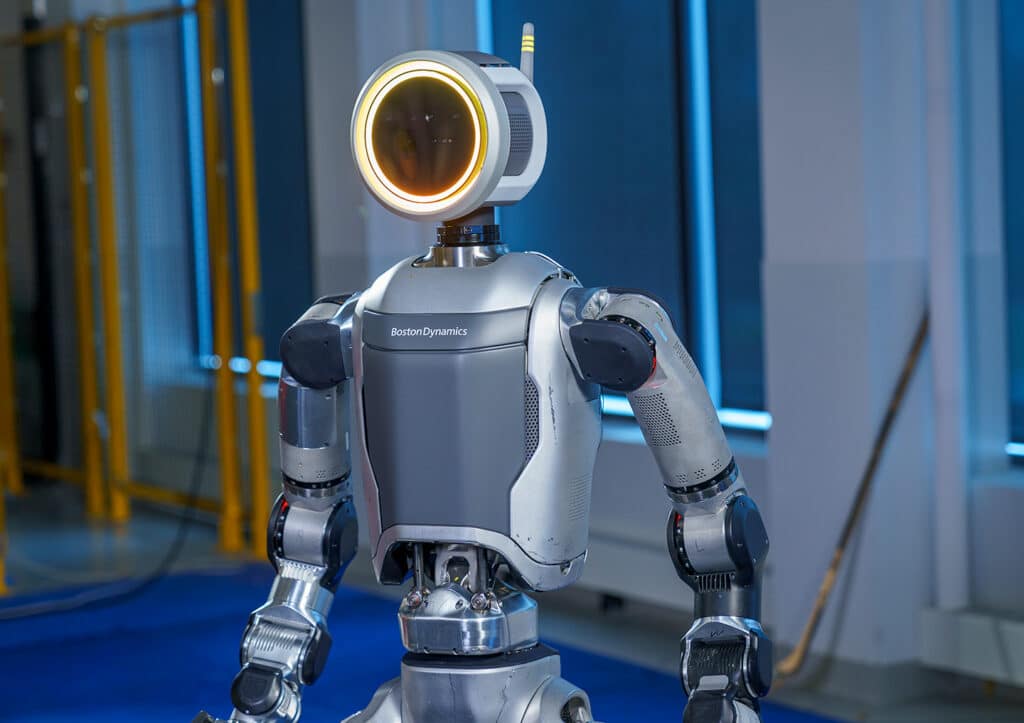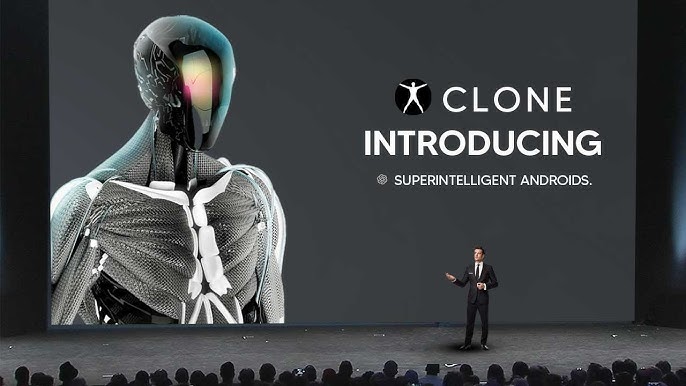Humanoids are robots designed to resemble and mimic human physical characteristics, behavior, and interactions. These robots are often equipped with advanced sensors, AI, and actuators that allow them to perform tasks similar to humans. Humanoids can have a wide range of applications, including:
Healthcare: Acting as caregivers, therapists, or surgical assistants.
Education: Serving as teaching assistants or tutors.
Customer Service: Assisting in retail stores, hotels, and banks.
Industrial Applications: Performing repetitive tasks in manufacturing and logistics.
Research: Aiding in human-machine interaction studies.
Companionship: Supporting the elderly or providing social interaction.
Notable humanoids like Honda’s ASIMO, Boston Dynamics’ Atlas, and SoftBank’s Pepper showcase the potential for robotics to transform industries. Recent developments focus on improving mobility, human-like dexterity, and conversational AI to enhance human-robot collaboration.
Future of Humanoids
The future of humanoids is highly promising, driven by advancements in artificial intelligence, machine learning, and robotics technology. Key areas of focus include:
1. Enhanced Intelligence: Incorporation of advanced generative AI models for improved decision-making, natural language understanding, and emotional intelligence.
2. Biomimicry: Development of humanoids with lifelike materials and movements that closely replicate human behavior, making interactions more intuitive.
3. Autonomous Adaptation: Creation of robots capable of learning new tasks on their own, adapting to various environments without significant reprogramming.
4. Integration in Daily Life:
Personal Assistants: Supporting individuals with disabilities or assisting in household tasks.
Public Services: Patrolling as security robots or aiding in disaster response.
5. Collaborative Workspaces: Deployment of humanoids in offices, factories, and warehouses, working seamlessly alongside human teams to improve efficiency and productivity.
6. Affordable Accessibility: Advances in production and materials will make humanoids cost-effective, increasing their adoption across industries and personal use.
7. Ethical Considerations: Establishment of guidelines to ensure humanoids are used responsibly, addressing concerns about privacy, safety, and job displacement.
8. Interplanetary Exploration: Utilization of humanoids for space exploration to perform complex tasks in hazardous environments.
Humanoids represent the convergence of technology and human-centric design. Their continued evolution will redefine the boundaries of human-machine interaction, creating opportunities for innovation across sectors. While challenges like energy efficiency, ethical implications, and user trust remain, the integration of humanoids into society has the potential to revolutionize industries, improve quality of life, and address global challenges.
Let’s explore key players
As of November 2024, several advanced humanoid robots have been unveiled, showcasing significant progress in robotics technology:
1. Boston Dynamics’ Atlas (Electric Model): In April 2024, Boston Dynamics introduced a fully electric version of its humanoid robot, Atlas. This iteration features enhanced strength and a broader range of motion compared to its hydraulic predecessor. Designed for industrial applications, the new Atlas can autonomously perform complex tasks, such as moving engine covers and navigating factory environments without human intervention.
2. Tesla’s Optimus Gen 2: Tesla released a demonstration video in December 2023 showcasing the Optimus Gen 2 humanoid robot. This model exhibits improved dexterity, capable of handling delicate objects like eggs without breaking them. Tesla envisions Optimus performing various household and industrial tasks, with plans for broader deployment in the coming years.
3. Clone Robotics’ Humanoid Robot: Polish company Clone Robotics has developed a humanoid robot equipped with water-powered muscles that closely mimic human movements and strength. Covered in protective white skin, the robot features artificial bones, muscles, and joints resembling human anatomy. It is designed to integrate seamlessly into existing assembly lines, aiming to replace human workers without necessitating significant modifications to current processes.
4. Figure AI’s Figure 02: Figure AI, in collaboration with BMW, has introduced the Figure 02 humanoid robot. This robot has demonstrated a 400% efficiency improvement in tasks such as moving engine covers and navigating factory environments. It utilizes machine learning vision models to adapt to changing conditions and operates entirely on generated motions without predefined commands.
These developments highlight the rapid advancements in humanoid robotics, with companies focusing on enhancing autonomy, dexterity, and integration into human-centric environments.
Boston Dynamics’ Atlas (Electric Model)

Boston Dynamics has introduced a fully electric version of its humanoid robot, Atlas, marking a significant advancement in robotics technology.
Key Features of the Electric Atlas:
- Power System: Transitioning from a hydraulic to an electric system, the new Atlas benefits from enhanced efficiency and a broader range of motion.
- Design and Mobility: The robot’s design emphasizes agility and strength, enabling it to perform complex tasks with human-like dexterity. Its lightweight structure, incorporating titanium and aluminum 3D-printed parts, contributes to a favorable strength-to-weight ratio.
- Control and Perception: Equipped with advanced control algorithms and real-time perception capabilities, Atlas can navigate and interact with its environment effectively. It utilizes depth sensors to generate point clouds of its surroundings, facilitating precise movements.
- Applications: Designed for real-world applications, the electric Atlas is intended to assist in tasks that are dull, dirty, or dangerous, particularly in industrial settings. Its capabilities include handling objects, navigating complex terrains, and performing tasks autonomously.
This development underscores Boston Dynamics’ commitment to advancing humanoid robotics, aiming to integrate such robots into practical, everyday applications.
Tesla’s Optimus Gen 2

Tesla’s Optimus Gen 2 is the latest iteration of its humanoid robot, unveiled in late 2023. The robot represents a significant leap in Tesla’s robotics division, blending advanced AI, engineering, and hardware capabilities.
Key Features of Tesla’s Optimus Gen 2
Enhanced Dexterity and Precision
- Optimus Gen 2 can perform intricate tasks with high precision, such as:
- Handling fragile objects like eggs without breaking them.
- Performing fine motor tasks that require careful manipulation.
- Tesla demonstrated the robot’s ability to move and stack delicate objects, highlighting its improved control mechanisms.
Advanced AI and Autonomy
- Powered by Tesla’s AI architecture, Optimus utilizes the same neural network approach as Tesla’s Full Self-Driving technology, adapted for robotics.
- The robot is capable of:
- Autonomous navigation in complex environments.
- Learning new tasks through reinforcement learning and imitation.
- Real-time decision-making enables it to adapt to dynamic scenarios in industrial and domestic settings.
Sophisticated Hardware Design
- Equipped with state-of-the-art actuators and sensors for fluid and lifelike motion.
- Features lightweight materials to enhance mobility while maintaining structural durability.
- Energy-efficient battery systems ensure extended operational capability.
Applications
- Industrial Use: Assembly line tasks, material handling, and repetitive operations in factories.
- Domestic Assistance: Potential for future household applications like cleaning, organizing, and caregiving.
- Future Expansion: Tesla envisions the robot as a platform that can be programmed for various use cases by developers.
Vision for the Future
Elon Musk has positioned Optimus as a transformative product that could redefine labor-intensive tasks. Tesla’s long-term goal is to produce the robot at scale, bringing down costs and increasing accessibility.
Release Timeline and Availability
- The Optimus Gen 2 is currently in the prototype stage with ongoing demonstrations.
- Tesla plans to refine its capabilities before a broader release to industrial partners, with potential consumer availability in the coming years.
Tesla’s Optimus Gen 2 showcases how robotics can integrate into everyday life, aiming to solve labor challenges and enhance productivity across multiple domains.
Clone Robotics’ Humanoid Robot

Clone Robotics, a Polish company, has developed a cutting-edge humanoid robot designed to mimic human anatomy and movements with unprecedented accuracy. The robot features advanced biomimetic technology, enabling it to perform tasks with the strength and precision of human muscles.
Key Features of Clone Robotics’ Humanoid Robot
Biomimetic Design
- Water-Powered Muscles:
- The robot uses artificial muscles powered by water-based hydraulics.
- These muscles replicate human musculature, providing strength and flexibility similar to real muscles.
- The design allows for lifelike movements and a high degree of control over force and motion.
- Human-Like Skeleton:
- Constructed with artificial bones and joints closely resembling human anatomy.
- Provides structural integrity while maintaining lightweight mobility.
- Protective Covering:
- A sleek, protective white “skin” encases the robot, ensuring durability and aesthetic appeal.
Advanced Movement Capabilities
- Capable of performing tasks that require fine motor skills, such as grasping, lifting, and manipulating objects with precision.
- Can mimic human movements, such as arm swings, head turns, and other natural motions, with remarkable fluidity.
Application Potential
- Industrial Integration:
- The robot is designed to seamlessly integrate into existing assembly lines.
- It can replace human workers without significant modifications to the production environment.
- Medical and Rehabilitation:
- Potential use in medical training, prosthetics testing, and rehabilitation research.
- Research and Development:
- Its biomimetic features make it a valuable tool for studying human motion and biomechanics.
Technology and Control
- Equipped with advanced sensors and AI algorithms to adapt to its environment.
- Capable of learning and optimizing its tasks over time through machine learning techniques.
- Operates with precision even in dynamic and unpredictable settings.
Innovative Applications
Clone Robotics envisions its humanoid robot as a transformative technology for industries that require precision, adaptability, and human-like dexterity. Its design bridges the gap between traditional industrial robots and human labor, offering a flexible solution for diverse applications. With its groundbreaking approach to robotics, Clone Robotics is setting a new standard for humanoid robots, paving the way for their widespread adoption in industries ranging from manufacturing to healthcare.
Figure AI’s Figure 02

Figure AI, a leading robotics company, has developed Figure 02, an advanced humanoid robot designed for industrial efficiency and adaptability. This next-generation robot demonstrates significant technological advancements, emphasizing autonomous functionality, precision, and real-world application.
Key Features of Figure 02
High Efficiency and Autonomy
- Task Execution:
- Figure 02 is 400% more efficient in performing tasks like moving engine covers compared to earlier models.
- Can autonomously operate in dynamic factory settings, adapting to changing conditions without requiring human intervention.
- Generated Motion System:
- Operates entirely on generated motions rather than pre-programmed commands.
- Uses machine learning to determine the most efficient way to complete tasks, reducing setup and execution time.
Advanced Vision and Perception
- Machine Learning Vision Models:
- Equipped with state-of-the-art visual sensors and perception systems.
- Can identify and adapt to different objects and obstacles in real-time.
- Real-World Adaptability:
- Effectively navigates complex environments using depth perception and predictive algorithms.
Sophisticated Design and Mechanics
- Human-Like Movement:
- Articulated joints and actuators replicate human-like motion with precision.
- Capable of performing delicate and complex tasks, such as material handling and assembly operations.
- Lightweight and Durable Construction:
- Built with advanced materials to ensure strength without compromising mobility.
- Ergonomically designed for both industrial and collaborative environments.
Applications
- Manufacturing and Logistics:
- Ideal for tasks like assembling components, material transportation, and quality checks.
- Industrial Collaboration:
- Designed to work alongside human operators, enhancing efficiency and safety in shared environments.
- Research and Development:
- Offers a flexible platform for testing and optimizing processes in robotics and AI applications.
Innovative Advancements
- Collaboration with BMW:
- Figure AI partnered with BMW to enhance Figure 02’s functionality in automotive manufacturing.
- Demonstrated improved productivity and precision in factory workflows.
- Scalability and Integration:
- Figure 02 is designed to integrate seamlessly into existing industrial ecosystems.
- Scalable for broader deployment across industries, making it a versatile solution.
Vision for the Future Figure AI’s Figure 02 embodies the next step in humanoid robotics, merging cutting-edge AI and mechanical design. With its emphasis on efficiency, autonomy, and adaptability, the robot is set to revolutionize manufacturing and industrial processes, creating new possibilities for automation and collaboration.
Thanks


